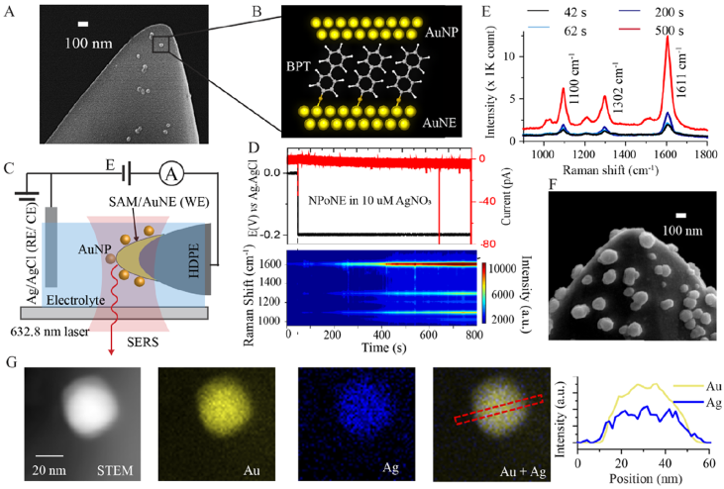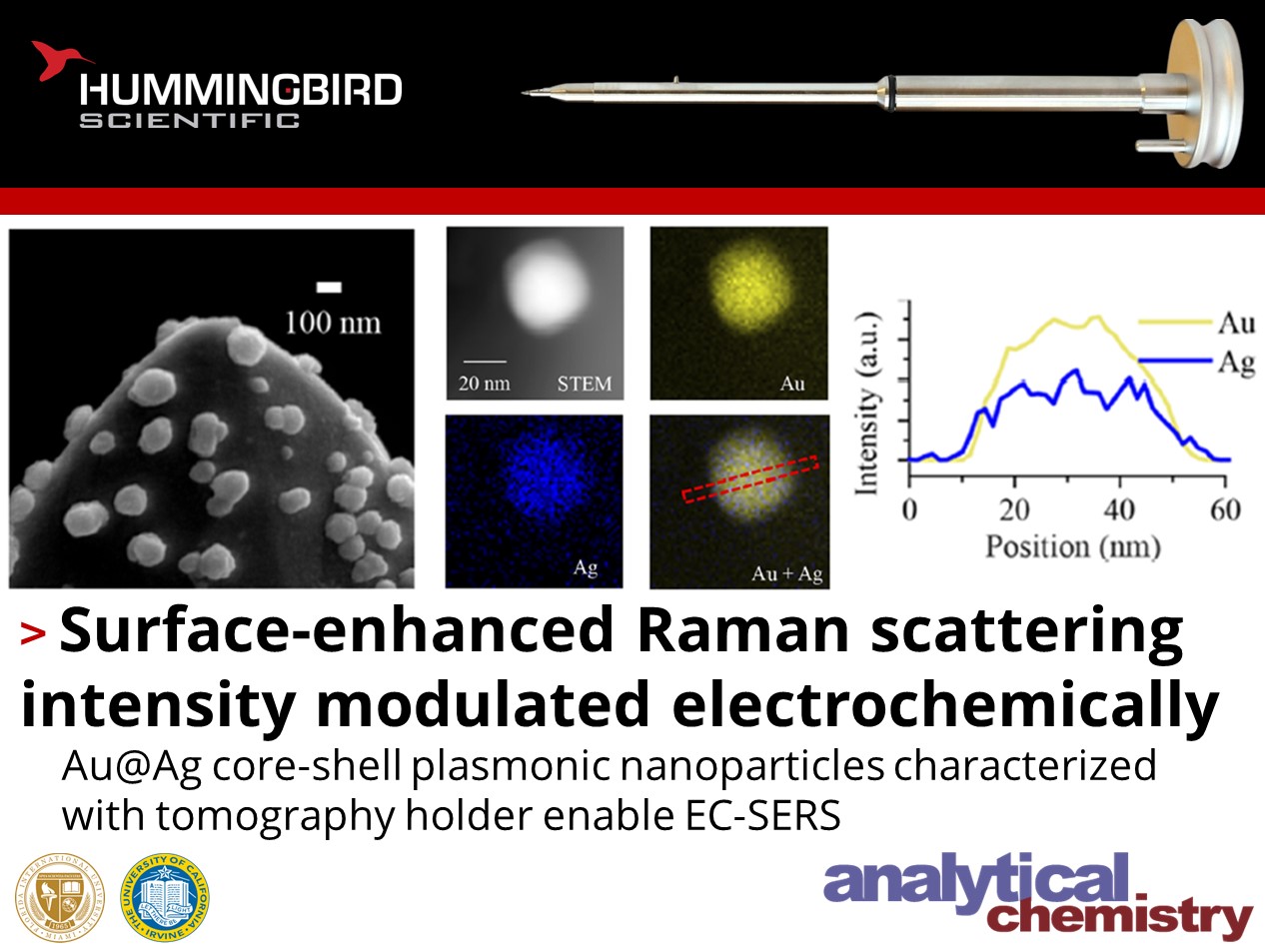How can uniquely structured nanoparticles be used to modulate surface-enhanced Raman scattering signal?
Jing Guo, Jin He, and their colleagues at Florida International University and the University of California-Irvine published work using the Hummingbird Scientific tomography sample holder to perform energy dispersive X-ray spectroscopy (EDS) on gold-core, silver-shell nanoparticles. The analysis supported an experiment in which the nanoparticles enabled effective and reversible enhancement of surface-enhanced Raman spectroscopy (SERS) signal by applying potential to a gold nanoelectrode modified with a self-assembled monolayer.

a) SEM image of AuNE apex with adsorbed AuNPs. b) Plasmonic BPT molecular junctions in the Au nanoparticle-on-nanoelectrode (NPoNE) structure. c) Schematic of the experimental setup. AuNE is partially insulated by high-density polyethylene. The electrode potential E was applied to the WE AuNE, and the Ag/AgCl wire electrode was the quasi-reference electrode (RE) and counter electrode (CE). d) Chronoamperogram of Ag deposition (upper) and corresponding SERS intensity heatmap (lower). The exposure time for SERS is 0.1 s/frame. e) Selected SERS spectra from the heatmap before Ag deposition at t = 42 s and after Ag deposition at t = 62, 200, and 500 s showing signal increase. f) SEM image of a AuNE apex with Au@Ag NPs after 0 min of Ag deposition. g) STEM image and EDS elemental analysis of a Au@Ag core−shell NP formed after 30 s Ag deposition. Copyright 2021 American Chemical Society
SERS refers to a selective enhancement of Raman signal by nanoparticles adsorbed onto a metal surface rather than a bulk signal. Modulation of this signal enhancement with applied potential was achieved via transformation between metallic silver and insulating silver chloride within the plasmonic nanocavity between the nanoparticle and nanoelectrode. Finite-difference time-domain simulations confirmed that the intensity modulation stems from changes in electromagnetic enhancement within the plasmonic nanocavity between the nanoparticle and nanoelectrode. Selective enhancement of Raman bands associated with silver-molecule interactions indicated modulation of local chemical content. EDS was performed using the tomography holder, which allows the stability for long collection times. The EDS elemental analysis reveals well distributed Ag on the Au NP, confirming the formation of Au@Ag and the ultrathin Ag layer which governs SERS response. The demonstrated method for electrochemical control of SERS intensity will inform future electroanalytical applications, and Hummingbird products will be available to inform nanoparticle selection and synthesis.
Reference: Jing Guo, Xingxu Yan, Mingjie Xu, Govinda Ghimire, Xiaoqing Pan, and Jin He, Analytical Chemistry 93 (3) 4441-4448 (2021) DOI: 10.1021/acs.analchem.0c04398
Full paper Copyright © 2021 American Chemical Society
View All News

